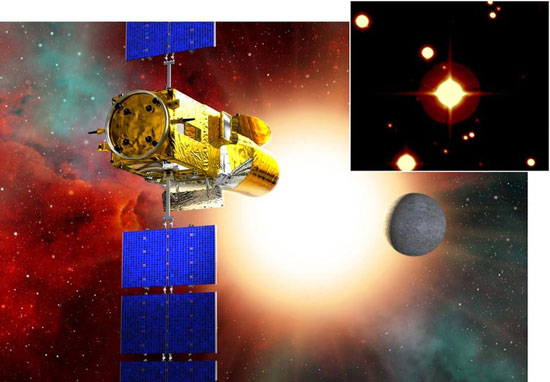Discovering earth-like planets are the hottest planets
The new findings show that planets are closer or larger than the size of the earth as well as having the same earth-like composition, common throughout the Galaxy.

COROT space telescope was built by French scientists in 2006 to search for earth-like planets.
The galaxy is a collection of about 10 million to more than trillions of different stars mixed with dust, gas and possibly dark matter rotating around a center of mass. The Earth lies in a solar system belonging to a galaxy called the Milky Way Galaxy (Milky Way Galaxy); Our Solar System is located at the edge of the Milky Way galaxy disk. On summer evenings, looking at the mind from the Earth, a strip of stars is often called the Milky Way.
However, when Kevin Schlaufman, a graduate student at the University of California, Santa Cruz, USA, and colleagues used computer models to simulate the theory of the distribution of extrasolar planets heaven, they found quite a common existence of planets formed with the same physical composition as the earth but much larger . The team's results, published in The Astrophysical Journal Letters, show that these solid planets will have 10 times the mass of the Earth and orbit the host star for 24 hours or less. This is similar to the other planets.
' If our model and analysis are correct, then Earth-like planets will be the hottest planets in the galaxy ,' according to Schlaufman, 'the surface of Earth-like planets is likely to exist. in molten lava oceans as well as the evaporation process according to separate geological activities . '
For about 100,000 years, the planets interacted with each other and the smaller planet quickly moved deep into the larger stars. Schlaufman notes that life on these melting planets is completely impossible.
Natalie Batalha, the leader of the science team working for NASA's Kepler mission to search for Earth-like planets, the team found that many candidates are planets smaller than Neptune in orbit. around these stars, this suggests that the computer model to simulate the theory of the distribution of Schlaufman's extrasolar planets and colleagues ' approached the right target .' Scientists are expected to announce the discovery of a series of new super-Earths with melting temperatures early next year.
- Discovering 'Earth Stone' has 3 suns at the same time
- The hottest earth in 2,000 years
- 12 hottest things in the universe
- Discover more than 700 planets outside the solar system
- Planet is more than 4,000 degrees Celsius in the universe
- Earth experienced the hottest June in more than 130 years
- Discover the hottest planet
- Discovering planets hotter than 2,000 degrees Celsius
- The hottest and fastest planet
- Ten strange planets of the universe
- Discovered 'Earth materials' in 18 other planetary systems
- Animals live in the hottest place in the world
 Van Allen's belt and evidence that the Apollo 11 mission to the Moon was myth
Van Allen's belt and evidence that the Apollo 11 mission to the Moon was myth The levels of civilization in the universe (Kardashev scale)
The levels of civilization in the universe (Kardashev scale) Today Mars, the sun and the Earth are aligned
Today Mars, the sun and the Earth are aligned The Amazon owner announced a secret plan to build a space base for thousands of people
The Amazon owner announced a secret plan to build a space base for thousands of people